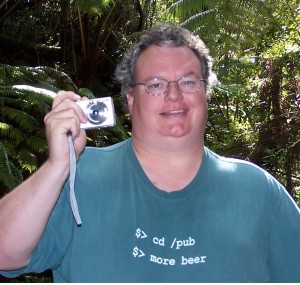I posted this on Lose It but wanted to post here too.
If you are making a life change (like let’s say, losing weight for example), that will be hard for the first FOUR WEEKS. But, if it is the right change, if it makes your life better, it should get easier, and it should be its own reward. So give your plan a fair chance and stick to it faithfully for four weeks. Reach into your reserves and pull out the stops during this time. Distract yourself, drink more water, write in your journal, sing to yourself, get psyched up, kick your own ass, and tell all your friends to kick your ass for you too.
Then after four weeks, really examine your results. Not just are you losing pounds, but is it sustainable? Is it getting easier, or do you still need to psych yourself up to follow it? Are the cravings disappearing? Can you really honestly say you want to live the rest of your life this way? Because that is exactly what you need… a plan you can keep doing forever. If your plan is not that, if you’re not feeling “THIS IS THE NEW ME” then change it up. Take a week to think about how to adjust your plan, or find some totally new plan to try. Don’t be afraid to try new things. If the right plan is out there, you will need to try a few different things before you find it.
So often I see messages from people who have been on the same plan for 3 months and their motivation has mysteriously failed. I think to myself, of course your motivation failed, because you are following the wrong plan for you. If you are getting psyched up to follow your plan every day for three months and it still hasn’t got to the the magic “THIS IS THE NEW ME” stage, you will fall off. You will get distracted by a trip or a birthday or just not wanting to go to the gym at 5:30 am for a few days, and the next thing you know your plan is forgotten, it’s two weeks later and you’ve undone five weeks of progress.
If this has happened to you, it is NOT YOUR FAULT, it was a bad plan. Think of it this way, if your plan is fragile enough that it just takes a couple days of distraction and it’s out the window, how do you think the plan would hold up to a REAL challenge? Like let’s say you hurt yourself and you’re not able to exercise at all, or you have to take care of a sick family member, or you lose your job? Your plan will go right out the window. That is because your plan CAUSES you stress, instead of giving energy back.
So, work hard, but also work smart. This is a marathon, not a sprint, so do your homework, be prepared, and experiment until you find the right plan. Keep what works well, rotate out what doesn’t work well. Read up, study hard, think of 10 new things to try, and then try them, until you find the plan that sings to you. Find the plan that you would never think of giving up, because it has become part of you, and you will have already won the race…
Then something else magical happens… not only do you have the strength to keep going forever, now you also have the strength to give someone else a hand up. If you get to where you are effortlessly jogging, and someone else is struggling along, now you can give them a hand up.




